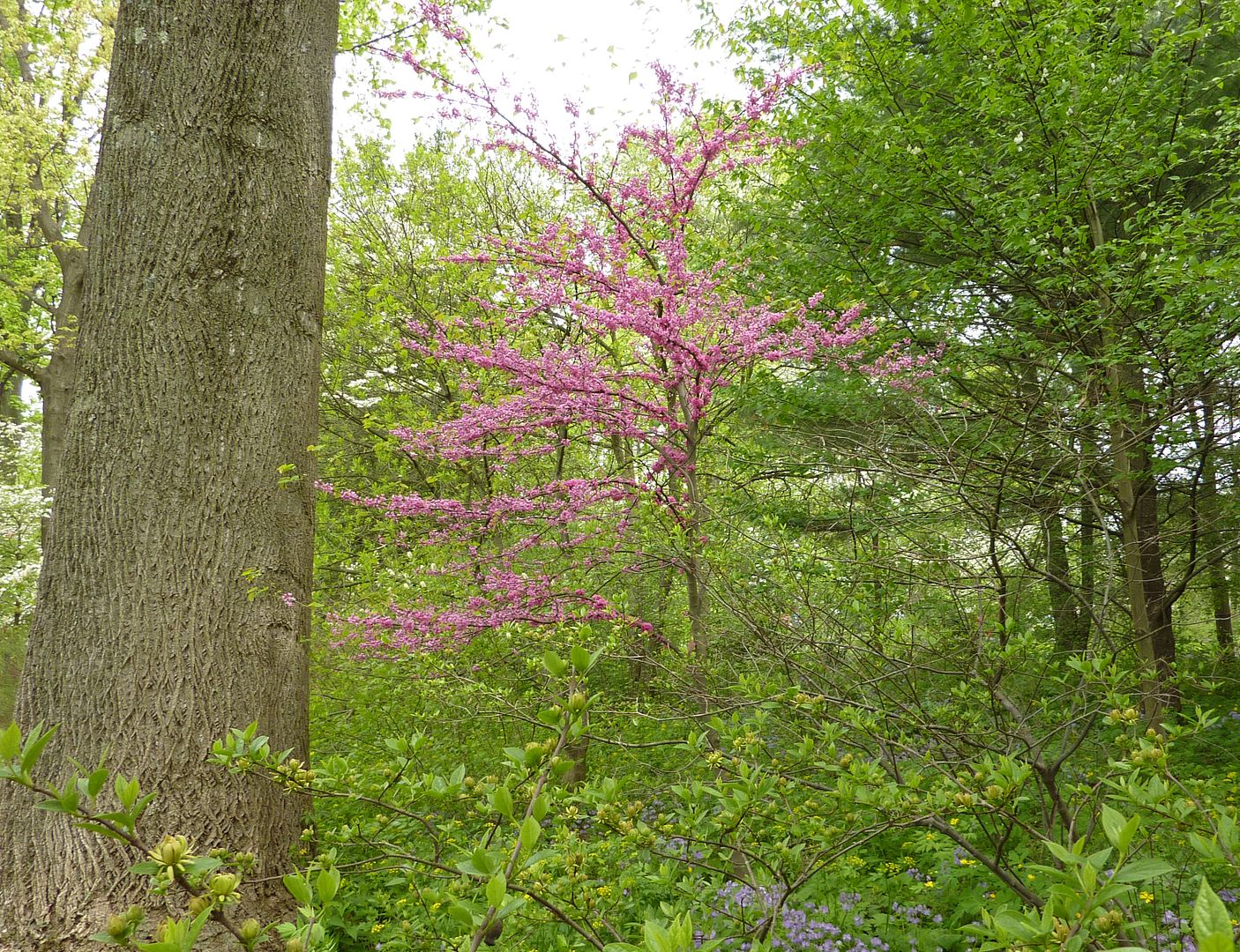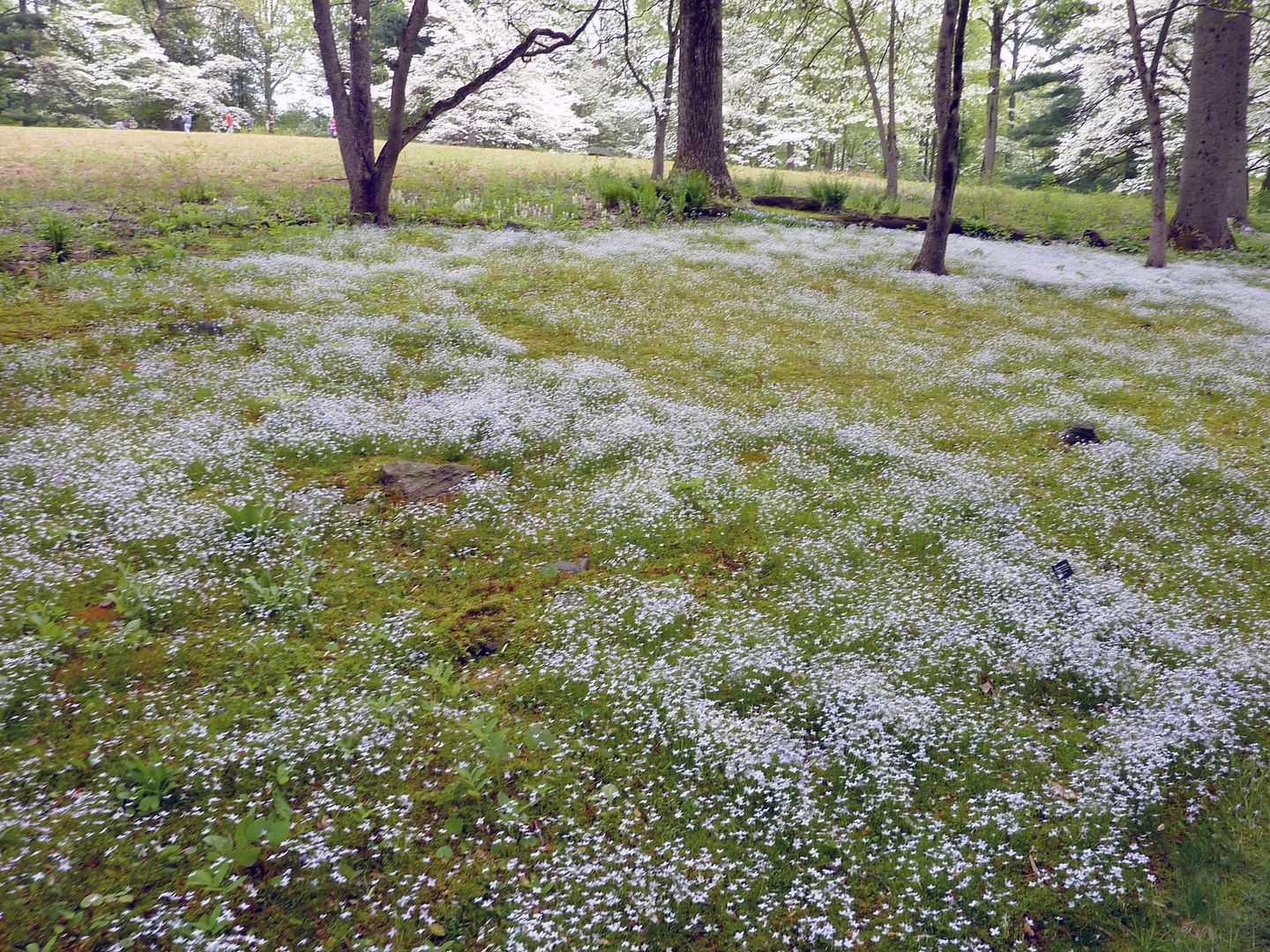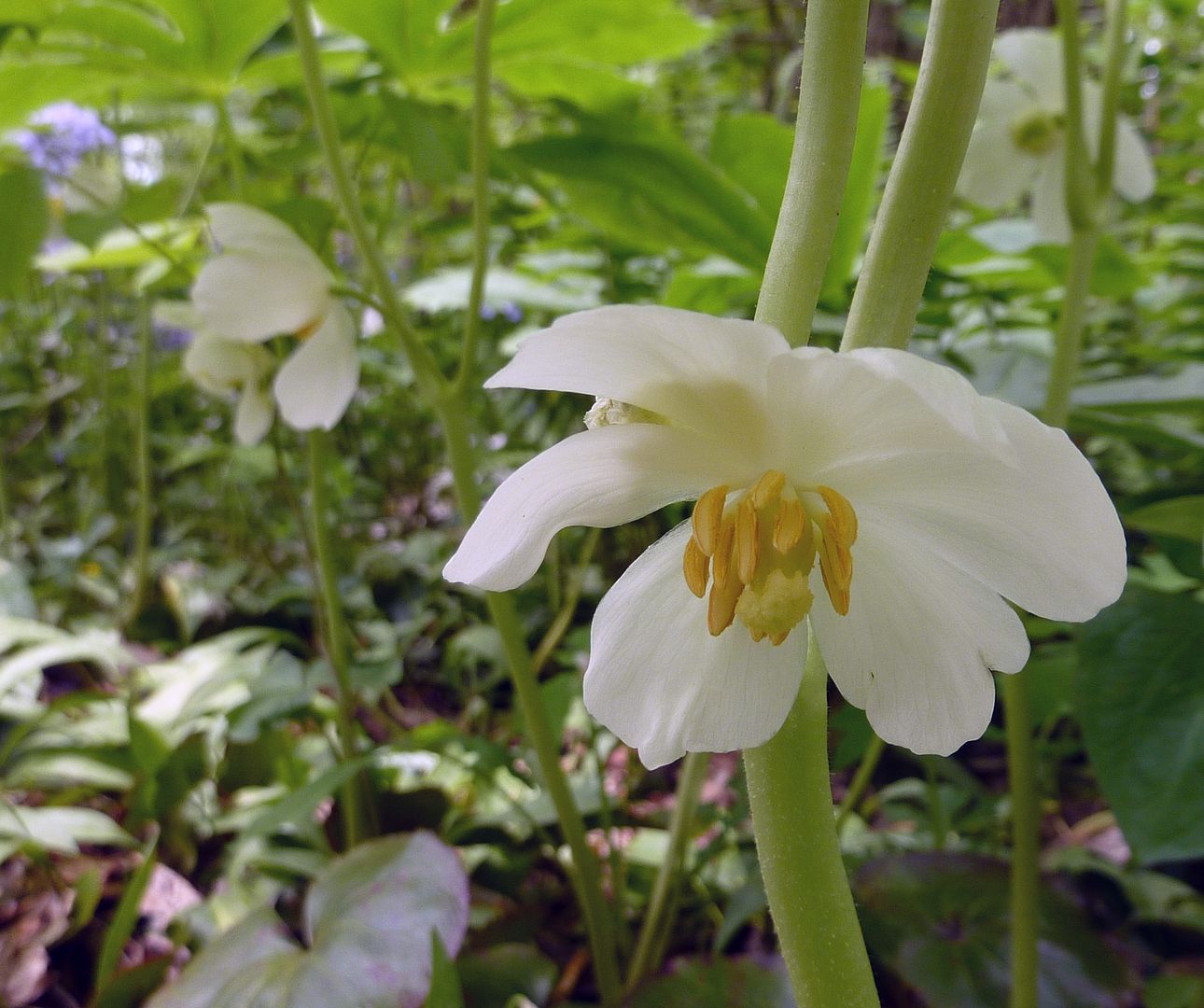Not only was it free to attend but the first 500 people were given a free plant. I was among the first 500 last year where I got a simple Coreopsis species. It didn't do very much but I see many shoots coming up this year and it's clearly seeded itself about. It's always wonderful to see a native plant doing that. This year, sadly I wasn't among the first 500 people, so no plant for me. This is a shame because I would have really enjoyed a free Bluestar! I'm not certain on the species, I think it was Amsonia tabernaemontana, or certainly one of the normal leafed Amsonia species. (Normal as in not thin.)
So without further delay, here's some of what you missed. Pictures are not in the order they were taken, but are arranged to have a sense of flow.
When first walking up to the Mt. Cuba Center I was hesitant to believe anything would be flowering at it's peak. I have a few of the same plants at my home garden and the theme last year seemed to be they were two weeks ahead of my garden. So here we are in 2011 and I'd expected everything to already be past it's peak as most of the Trillium species and the like seem to be on their way out at home. I'm happy to say my fears were not grounded in reality.
Sure bloom time may vary from year to year but the Mt. Cuba Center has such vast array of spring blooming wildflowers that there are always several dozen species reaching their peak bloom from week to week well into the summer. They also have the advantage of being on a hill with their own micro climate, so that same species at the top of the hill will be flowering differently than at the bottom. This extends the blooming season long enough that they have a wider window to hold their event.
Eastern Redbuds, Cercis canadensis, stood out in numerous places throughout the garden.
A lot of the other shrubs and trees weren't doing much though. Most Rhododendrons and Silver Bells weren't flowering at all.
White Flowering Dogwoods, Cornus florida, were a superb exception along with the redbud. They all seemed to be flowering at their peak on cue that day. My neighbor's tree flowers perfectly for about three days and then it's done, new leaves grow in and there's no white to be seen. At Mt. Cuba their clouds of white flowers are impossible to miss against the forest backdrop, so kudos to whoever picked the date.
Down on the forest edge floor, Bluets, Houstonia caerulea, sparkled in the patches of mass. The patch at the Mt. Cuba Center is a true highlight of the gardens.
The cluster is comprised of thousands of tiny white-blue flowers that each have 8 tiny gold dots in the center. As these are a new plant to my garden, I asked their expert gardener stationed nearby a quick question about them.
Basically I learned these do not hold up to foot traffic of any kind. It's best to grow them among moss in places where people rarely walk. They do send out runners, as you might see in some strawberries, but flowering reproduction is preferred and should be encouraged! Apparently runners are simply clones of the parent plant and it's believed that they are less likely to flower if they're simply cloning themselves. So seed production is a must for anyone interested in the snow effect seen above.
One plant that was a little past it's prime were the Swamp Pinks, Helonias bullata. I managed to find one in good flowering condition but most had already faded brown and were developing seeds. Note the pale blue anthers. This is also a threatened species, that's quite uncommon in the wild. I understand the flowers are like cotton candy to the Deer.
Yellow Lady Slippers, Cypripedium calceolus. This is another uncommon plant, and a favorite among plant poachers to dig up. My understanding is they don't respond well to transplanting and often die as a result of being disturbed while flowering. I'm not certain what the story is on their reproduction by seed but I imagen it's possible.
Showy Orchid, Galearis spectabilis, I believe. Maybe I should have taken the time to read that label conveniently just out of frame in the upper right. Anyhow these rare plants are always neat to find but I don't take much interest in things I can't really buy.
May Apple, Podophyllum peltatum. These plants have a wonderful flower that they keep hidden beneath two massive leaves.
Uvularia grandiflora, Bell Wort. This is a native I've never been interested in owning. I'm not sure what it is exactly. I guess you could describe it as a more manly version of Bleeding Hearts but I haven't come across anything in particular that catches my fancy with this one.
Foam Flowers, Tiarella cordifolia, planted among others in a garden. These were used heavily in places and make for a good primary plant to flow through an area. A theme the Mt. Cuba Center Gardeners use is planting in sweeps and somewhat natural looking flows. They do a great job, and often there will be one dominant plant used to guide you along while other plants accent your way.
Phacelia bipinnatifida is the dominant purple species here. The lighter blue is Jacob's Ladder, Polemonium caeruleum; the yellow flowers up front are Trillium luteum, and the red is Wild Columbine, Aquilegia canadensis. I found this to be a find combination.
Jacob's Ladder is another new one to my garden this year. The plants they had growing there are much bigger than what I have growing now. The flowers are twice the size too!
Fernleaf Phacelia, Phacelia bipinnatifida, was the dominant plant growing everywhere last year. It's still highly abundant in places but I feel like they may have removed some of it from places to make way for other plants. Last year I think I got sick of seeing it everywhere but it's wonderful all the same.
Stylophorum diphyllum, Woodland Poppy. This plant I'm sort of thrilled about. I've just added it at home and I'm hoping it will live up being a good ant plant. It's another one of those elaiosome coated seed plants that ants will distribute.
It wouldn't be a trip to the Mt. Cuba Center in the spring without seeing some Trilliums. I'm highlighting a few species that I don't have at home. Trillium sulcatum, which holds it's dark red flower up high.
Twisted Trillium, Trillium stamineum. These are a real treat but they're easy to walk right by.
The flower petal twists and to my knowledge this is the only Trillium to do so. Very interesting looking.
Trillium rugelii I believe. I'm not 100% on this ID. I'm not sure why they have the red in the middle of the petal.
Trillium grandiflorum was past it's prime when we went. Though that depends on your definition of what it's prim is. The flower opens for about a week and during that time it's a brilliant white flower. The following week, or shortly after pollination, the flower will change pink and then a brilliant purple magenta before finally fading completely. In mass both solid white and random pinks and purples are pretty.
Somewhere down the ling there was a flook Trillium that produced a double flower lacking any reproductive parts. Because Trilliums can also divide underground this unique plant was able to duplicate itself time and time again. This double flowering Trillium grandiflorum clump must have taken years to grow this big. I'd be curious to know if they fade pink and purple like the true species does as well, hmm...
Amsonia hubrichtii, Thread-leaf Blue Star. This was the 2011 Perennial of the year, though it wasn't showing off it's best that day. It was flowering nicely in other parts of the gardens but none of them were really accessible for close ups.
Rhododendrons were flowering too but none of them really topped this show stopper right as you walked in.
So that does it for my trip there. I'm hoping to visit a few more times this year. Thanks for reading.























